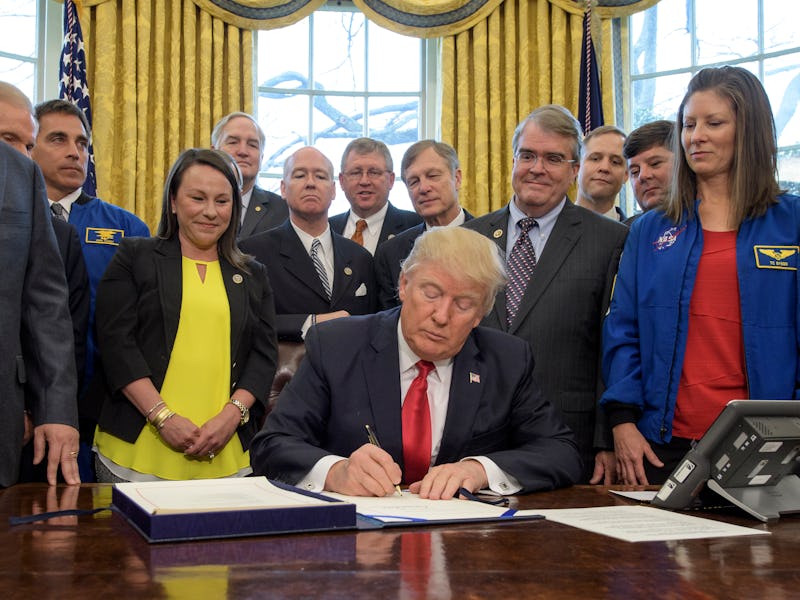Trump to Sign Directive to Send Humans Back to Moon, Despite Huge Problems

On Monday at 3 p.m. Eastern, President Trump will sign a directive, aptly titled “Space Policy Directive 1,” that will order NASA to help facilitate sending humans back to the Moon and on to Mars. The move is incredibly on-brand for an administration that vows to do big things despite having no knowledge on how to actually do them.
“The President, today, will sign Space Policy Directive 1 (SPD-1) that directs the NASA Administrator to lead an innovative space exploration program to send American astronauts back to the Moon, and eventually Mars,” a statement from the White House reads. The decision was in part motivated by a recommendation from the National Space Council, which Trump revived earlier this year.
NASA hasn’t sent humans to the moon — or even beyond low Earth orbit — since the Apollo 17 mission back in 1972. Clearly, many people are itching to get back out there. While space enthusiasts of all political affiliations would probably be happy with a moon and/or Martian mission, there are several red flags that make Trumps already-vague directive even less feasible.
NASA’s Administrative Musical Chairs
With Trump’s inauguration on January 20, previous NASA administrator Charles Bolden resigned, as did all of President Obama’s political appointees. In his place, Robert Lightfoot became NASA’s acting administrator — a role he’s still filling. In fact, Lightfoot’s tenure as NASA administrator is the longest of any acting admin. Without a person to permanently fill the role and lead NASA, it’s unclear how the agency will run and what its main priorities will be. While the most likely candidate to step in is Representative Jim Bridenstine, a Republican from Oklahoma, he was unexpectedly admonished at his Senate committee hearing in November and has yet to be officially confirmed, with no vote currently scheduled.
Jim Bridenstine at his Nov. 1 confirmation hearing.
Drama With The SLS
NASA’s Space Launch System (SLS) is the agency’s big ticket rocket, which it hopes to use in order to ferry humans to the moon or Mars. The problem is that SLS and the Orion spacecraft it’s supposed to carry have yet to embark on their first mission. In fact, the SLS program, which was created in 2010, has been delayed since 2016. Recent reports indicate its uncrewed maiden mission could be pushed until 2019 or even 2020. The agency is now considering a crewed maiden voyage for the SLS — which raises questions about astronaut safety — but regardless, it’ll be in a time crunch to fit within the timeline of Trump’s presidency. We’re not even gonna consider another four years right now.
SLS
Honestly, Who Knows?
We won’t know more about the directive until it’s signed later today at 3 p.m. Eastern. NASA will provide live coverage, as will the White House. Stick around, grab a drink. There might not be much science, but it’s free amusement.